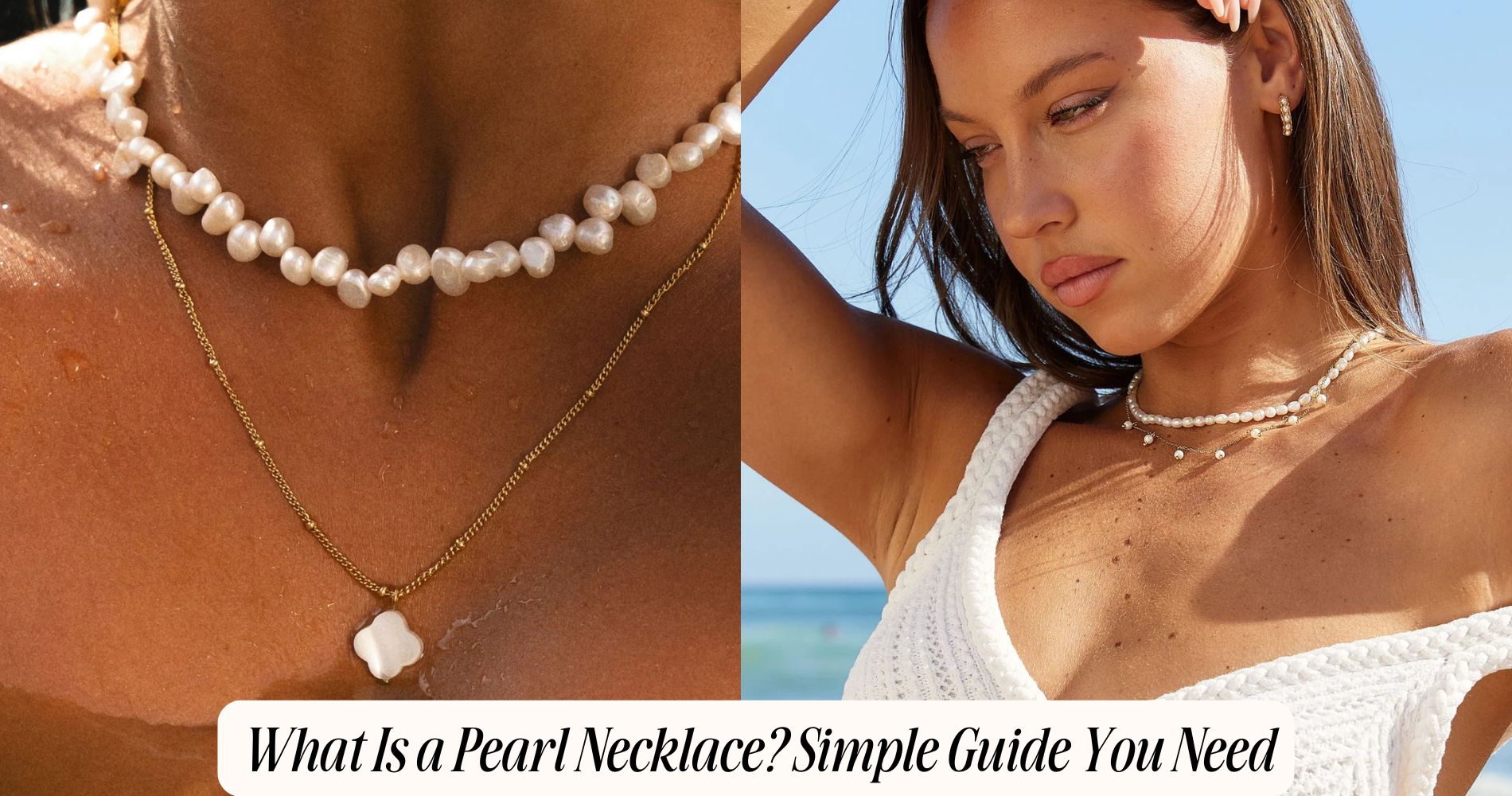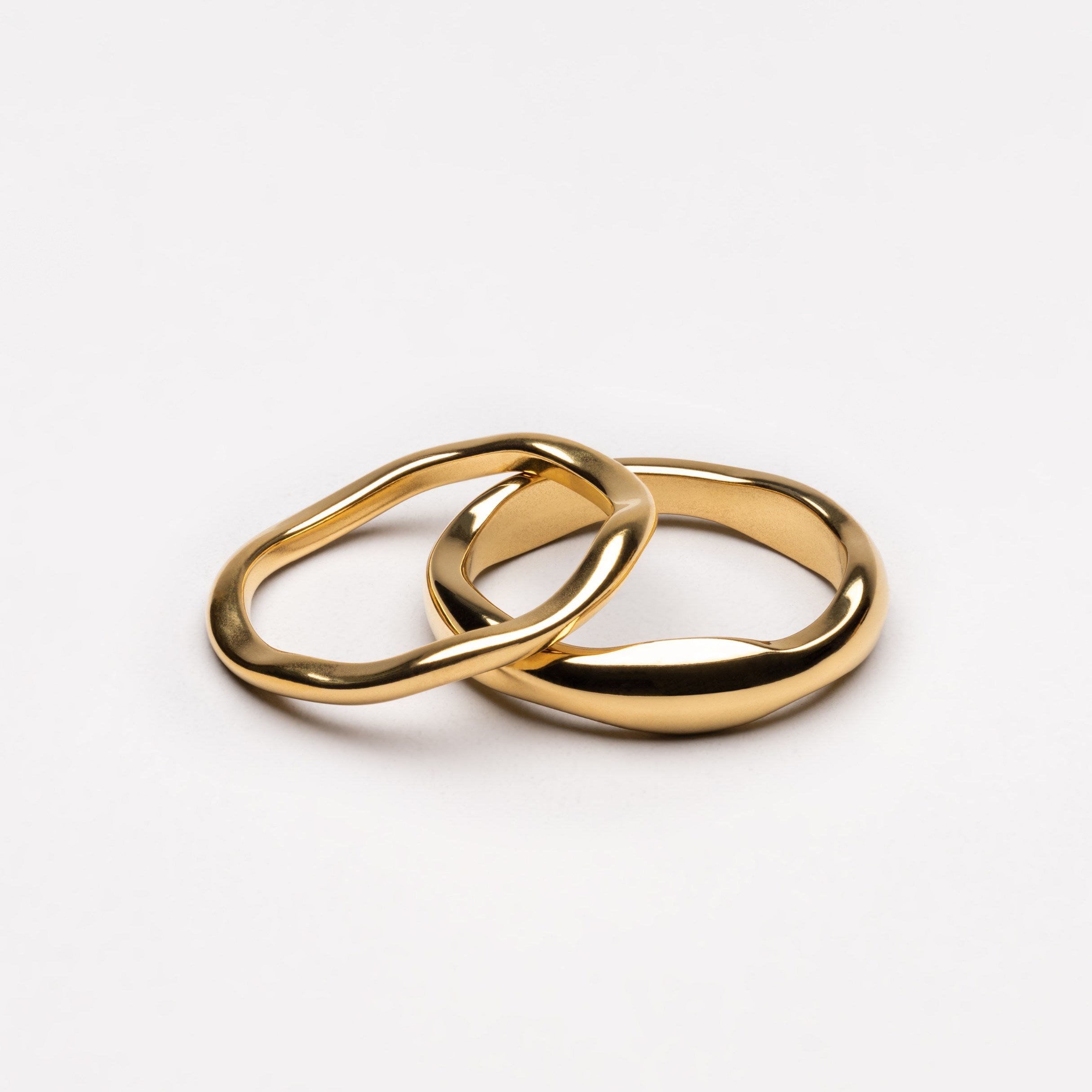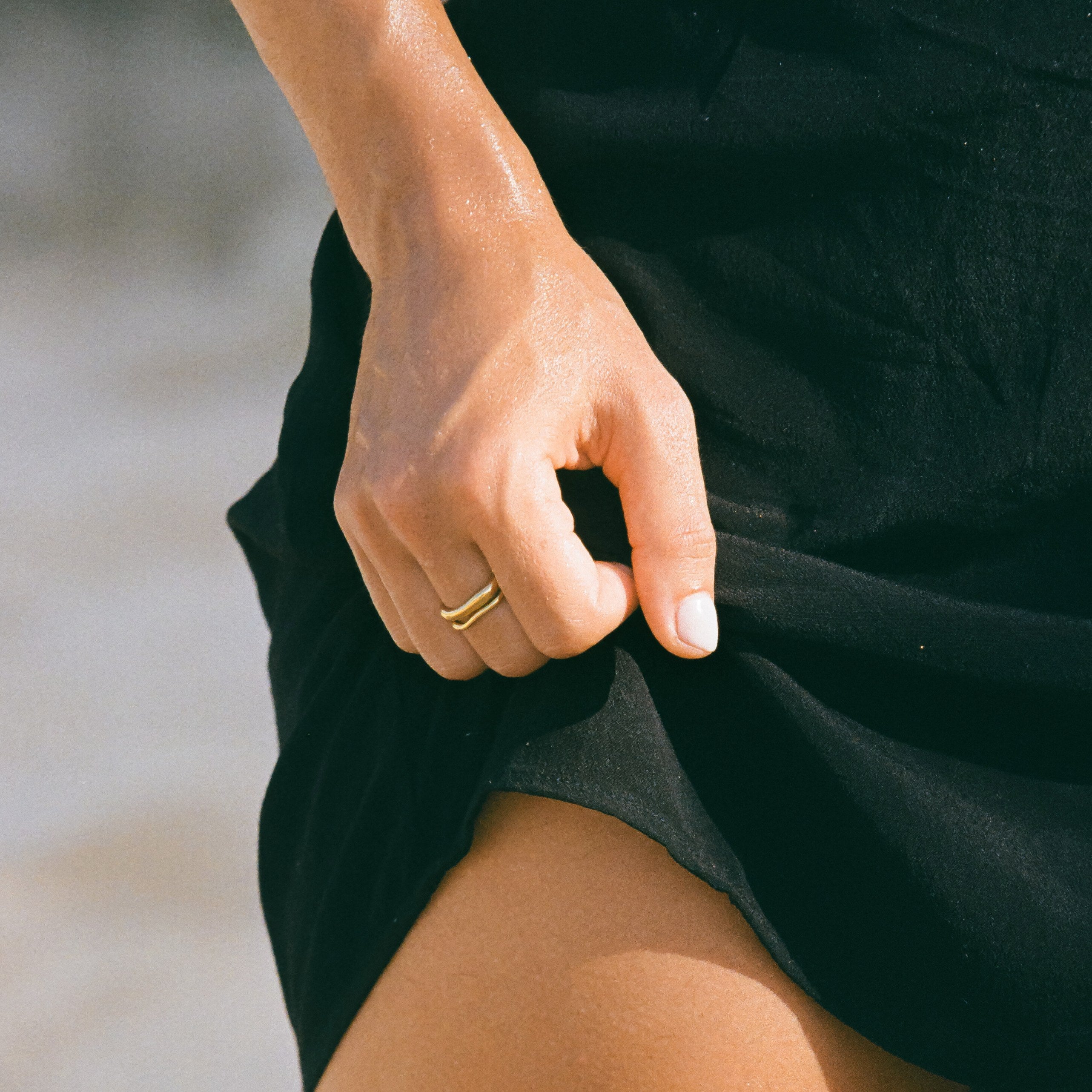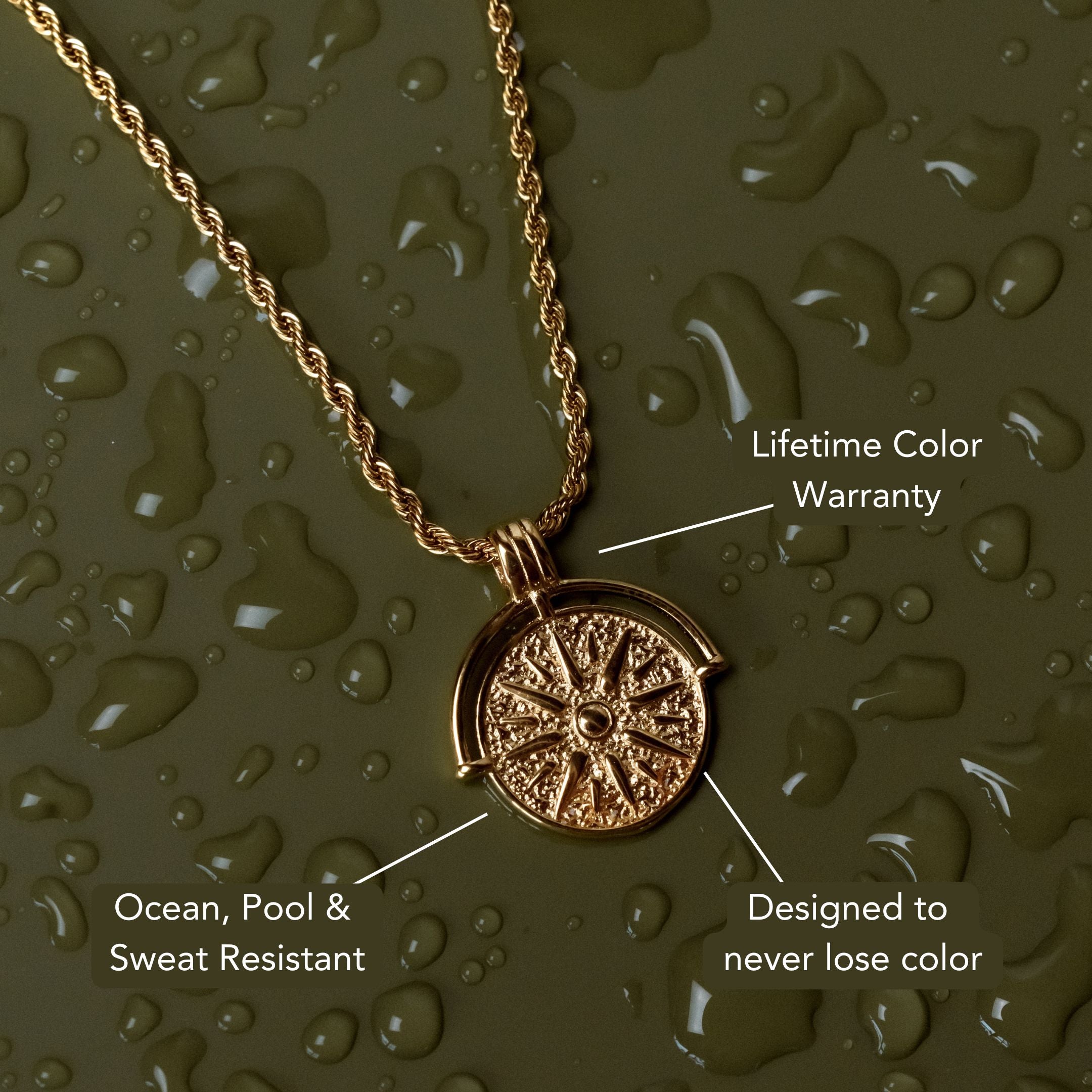
What Is a Pearl Necklace? Simple Guide You Need
What is a pearl necklace? It's a timeless strand of natural or cultured pearls, each carefully chosen for its luster, shape, and surface quality, then secured with a stylish clasp—often made from gold or platinum. These elegant pieces have symbolized purity and sophistication from ancient Egypt to modern-day fashion. Depending on whether they’re freshwater or saltwater, each pearl necklace tells a unique story of its origin and cultivation. Explore the different styles, grading systems, and care tips—just like those featured in our single pearl necklace collection.
Defining a Pearl Necklace
Although pearls have adorned jewelry for centuries, a pearl necklace specifically refers to a strand of cultured or natural pearls meticulously strung together, often secured with a decorative clasp. When you examine a true pearl necklace, you’ll notice the uniformity in pearl size, luster, and surface quality—outcomes of advanced pearl cultivation techniques.
Cultured pearls, produced by inserting a nucleus into oysters or mussels, dominate today’s market due to their consistency and availability. Each pearl is hand-drilled, then strung onto silk or nylon thread.
Necklace clasps do more than fasten—their design, typically gold or platinum, enhances both security and aesthetics. In technical terms, a pearl necklace is defined by these ordered pearls, high-quality stringing, and the presence of a reliable, elegant clasp.
The History and Symbolism of Pearl Necklaces
Beyond their technical construction, pearl necklaces carry a significance that's deeply rooted in history and culture. You'll find that in ancient civilizations such as Egypt and Rome, pearls symbolized wealth, status, and divine protection, often reserved for royalty and the elite.
In the Ming Dynasty and Victorian era, they represented purity and social prestige, reflecting their enduring cultural significance. Over centuries, pearls have been associated with wisdom, femininity, and elegance, making them a frequent choice for ceremonial and matrimonial jewelry.
Today, modern interpretations expand their symbolism, connecting them to empowerment, individuality, and timeless fashion. As you study pearl necklaces, you'll notice how their historical context merges with contemporary values, allowing them to remain relevant and cherished across generations and diverse cultural backgrounds.
Types of Pearls Used in Necklaces
When selecting a pearl necklace, you'll encounter several distinct types of pearls, each with unique origins and characteristics that influence their appearance and value. The primary distinction lies between freshwater vs saltwater pearls.
Freshwater pearls, typically cultivated in mussels within rivers and lakes, are valued for their diverse shapes and pastel hues. In contrast, saltwater pearls—such as Akoya, Tahitian, and South Sea varieties—are formed in oysters inhabiting oceans and are often prized for their roundness, luster, and larger sizes.
Most pearls on the market today are cultured pearls, produced by deliberately introducing an irritant into the mollusk to stimulate nacre secretion. This process, perfected in the early 20th century, revolutionized pearl availability and quality.
Understanding these differences helps you make informed choices regarding beauty, rarity, and investment.
Popular Styles and Lengths of Pearl Necklaces
Whether you’re seeking a classic or contemporary look, understanding the established styles and standard lengths of pearl necklaces is essential for making an informed selection.
The most iconic styles include the choker (14–16 inches), princess (17–19 inches), matinee (20–24 inches), opera (28–34 inches), and rope (over 45 inches). Each length has historical roots; for example, the opera length gained popularity during the Art Deco era.
Design variations such as single, double, or multi-strand pearl necklaces influence formality and visual impact. Pay attention to necklace clasps, which range from traditional fishhook to modern magnetic types, ensuring security and complementing aesthetics.
Pearl grading, which evaluates luster, surface, shape, and matching, determines both the visual appeal and value of your chosen style.
How to Choose the Right Pearl Necklace
Although pearl necklaces exude timeless elegance, selecting the right piece requires careful consideration of several technical factors. Begin by evaluating pearl type—Akoya, South Sea, Tahitian, or freshwater—since each offers unique luster, overtone, and historical significance.
Examine the nacre thickness for durability and sheen; pearls with thicker nacre, such as vintage Akoya, often hold up better for frequent use.
Size and shape influence both visual impact and fashion pairing; larger, round pearls convey formality, while baroque shapes suit contemporary style.
Consider strand length, from choker to opera, to complement your wardrobe and necklines.
For occasional wear, opt for versatile colors like white or cream.
Always check clasp quality and stringing technique, as these technical aspects ensure longevity and safety during wear.
Caring for Your Pearl Necklace
Because pearl necklaces are composed of organic nacre layers, they demand specialized maintenance to preserve their structural integrity and luster. Historically, pearls have been prized for their iridescent sheen, but improper care can result in dulling and degradation of the surface.
Use gentle cleaning tips: after each wear, wipe your pearls with a soft, damp cloth to remove natural oils and residues. Avoid harsh cleaning agents or ultrasonic cleaners, as these can erode the nacre.
For periodic deep cleaning, rinse with lukewarm water and mild soap, then dry flat.
When considering storage solutions, always keep your pearl necklace in a soft, fabric-lined pouch or separate compartment to prevent abrasion. Avoid prolonged exposure to heat, humidity, or direct sunlight, which can damage pearls over time.
How to Spot Real vs. Imitation Pearls
Proper care preserves a pearl necklace’s beauty, but verifying authenticity is just as important for long-term value. When you’re evaluating pearls, start with a luster comparison—real pearls exhibit a deep, mirror-like reflection and subtle iridescence created by layers of nacre, unlike the flat or glassy shine of imitation pearls.
Perform a surface examination next: natural pearls have minor blemishes, ridges, or overtones, while fakes tend to look perfectly smooth and uniform.
Historically, the “tooth test” (gently rubbing a pearl against your teeth for a gritty feel) has helped distinguish real pearls, as imitation ones feel slick.
Examine drill holes; authentic pearls show clean nacre edges, whereas imitations often reveal glass or plastic cores.
Use a magnifier for detailed inspection.
Styling Tips for Wearing Pearl Necklaces
Whether you prefer classic elegance or modern minimalism, a pearl necklace offers remarkable versatility rooted in centuries of sartorial tradition.
To master casual layering, pair a delicate freshwater strand with varying necklace lengths and textures—incorporate gold chains or minimalist pendants for dimension. This approach originated from 20th-century fashion icons who balanced refinement with relaxed styling.
For office elegance, choose a graduated Akoya pearl necklace or a choker-length single strand. These options complement tailored blouses and structured blazers, referencing the mid-century power dressing era, when pearls symbolized professionalism and poise.
Don’t hesitate to experiment with baroque pearls for a contemporary twist or opt for classic round pearls for timeless appeal. Ultimately, your styling reflects both historical context and personal expression.
Frequently Asked Questions
Can Men Wear Pearl Necklaces?
You can absolutely wear pearl necklaces, regardless of gender. Historically, men in royalty and high society adorned pearls. Consider modern gender considerations; pair pearls with tailored shirts or layered chains for contemporary styling tips that highlight your individuality.
Are Pearl Necklaces Appropriate for Children?
When considering pearl necklaces for children, you must prioritize child safety and age appropriateness. Traditionally, pearls symbolize innocence, but guarantee secure clasps and avoid choking hazards. Historically, pearls were gifted at milestones, often reserved for older children or adolescents.
How Much Do Pearl Necklaces Typically Cost?
When evaluating pearl necklaces, you’ll find the price range varies considerably. Factors like nacre thickness, luster, origin, and uniformity determine quality considerations. Historically, natural pearls commanded higher prices, while cultured pearls provide greater affordability and availability today.
Can Pearl Necklaces Be Repaired if Broken?
You can absolutely repair a broken pearl necklace. Skilled jewelers use specialized jewelry repair techniques, such as restringing with silk thread and knotting between pearls, for necklace restoration—a tradition dating back centuries to preserve heirloom quality and value.
Are Pearl Necklaces Suitable for Daily Wear?
You can absolutely wear pearl necklaces daily. Their nacre coating provides durability, making them viable for casual styling. Historically, pearls symbolized elegance, but today’s fashion versatility lets you integrate them into modern, everyday ensembles for effortless sophistication.
Conclusion
Now that you understand the anatomy of a pearl necklace—from nacre quality to clasp mechanisms—you’re equipped to make informed choices. Remember, pearl necklaces have adorned wearers for centuries, symbolizing elegance and status from the Ming Dynasty to Art Deco fashion. Distinguish between cultured and natural pearls, and always assess overtone, luster, and surface quality. With proper storage and cleaning, your necklace will retain its radiance, letting you celebrate this timeless accessory with both style and confidence.
























Leave a comment
This site is protected by hCaptcha and the hCaptcha Privacy Policy and Terms of Service apply.